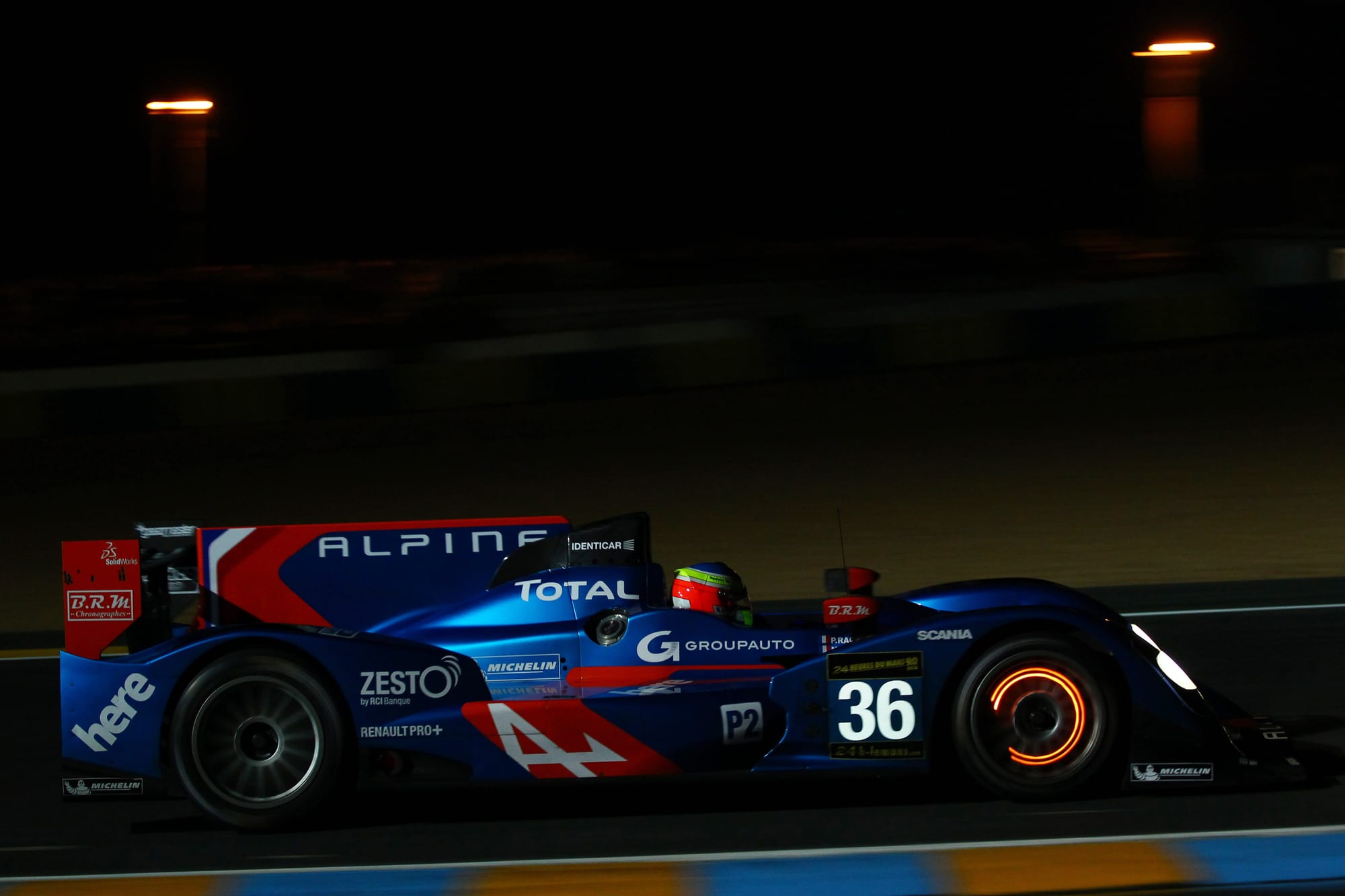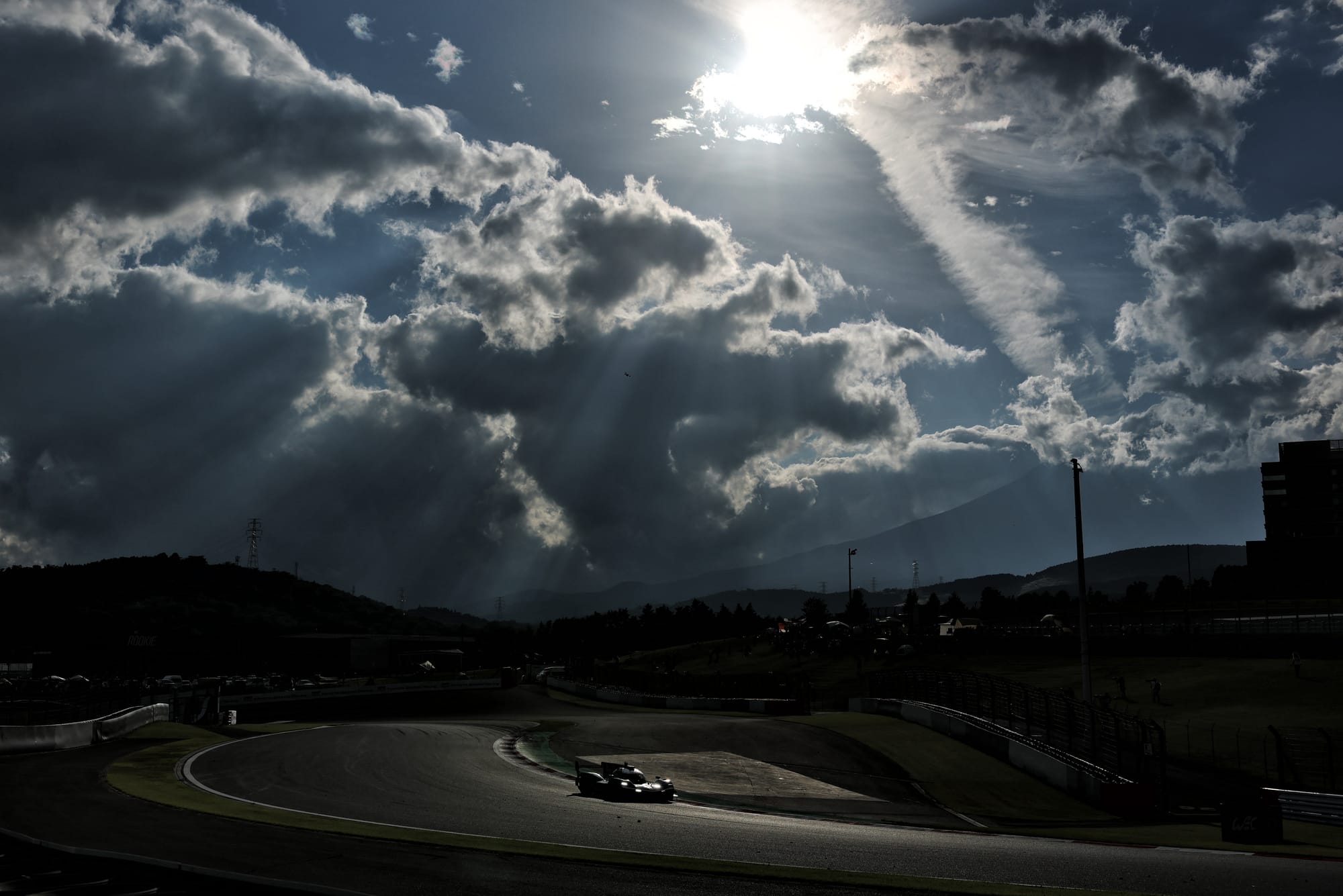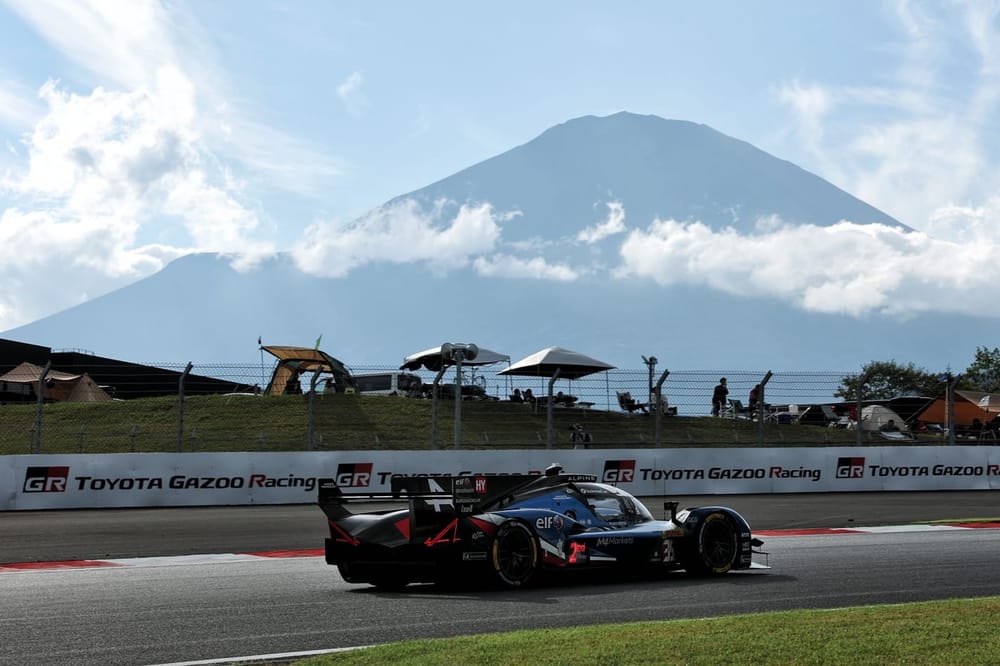The Alpine A424 became the latest Hypercar to join the World Endurance Championship winners' circle last month at Fuji - where the #35 car of Charles Milesi, Paul-Loup Chatin and Ferdinand Habsburg took a stunning win thanks to a bold late-race strategy.
That was a result few would have predicted, coming in a race filled with three safety car periods and five full course yellows. For a team that had been struggling for form since Spa in June, this felt like more than a win; it was a statement.
How has Alpine, a team often described as punching above its weight, outsmarted the best? And more importantly, could this be the turning point that reshapes its Hypercar project heading into 2026?
Alpine's first Hypercar victory
The #35 car's route to victory looked as though it might be over before it had barely even begun. Habsburg made contact with Sébastien Buemi's #8 Toyota just 16 minutes into the race, earning a five-second penalty that sent the #35 car tumbling down the order.
Yet what followed was a masterclass in opportunism and strategic nerve, which culminated in a call to change only two tyres at the final pitstop. That proved crucial: it not only shortened Alpine's stop, but also gave Milesi an advantage on his out-lap, with two already-warmed tyres.
"Even with the five-second penalty handed to the Porsche for a pit infringement, we would never have been able to beat the Peugeot without that gamble," said sporting director Nicolas Lapierre. "Last year we were in position to win here and lost it. This time, it's payback."
Milesi, often an underrated talent, delivered a well-composed stint. The young Frenchman's drive under pressure reminded many why he's been considered one of sportscar racing's rising stars.
A win at the perfect time
For Alpine, Fuji wasn't just a sporting triumph, it was a breath of oxygen. After a strong start to the season with podiums at Imola and Spa, the team had faded badly. Ninth at the Le Mans 24 Hours, ninth again in Sao Paulo, then 11th at Austin, far from the frontrunning promise shown early in the campaign. Inside the Alpine Endurance Team, frustration was building.
"We made a strong start to the season, but faced some more challenging rounds recently," admitted Lapierre. "This race at Fuji was shaping up to be decisive."
Decisive, because the timing could hardly have been better. Given the complex situation currently facing the European automotive industry, budgets are under scrutiny, and motorsport is often among the first casualties when corporate priorities shift. In times of restructuring, racing programmes tend to be placed on the chopping block.
That risk was real this year. The arrival of Francois Provost as Renault Group CEO, replacing Luca de Meo, marked a significant internal shift. De Meo had been a vocal supporter of motorsport. Provost's approach is maybe more pragmatic, more numbers-driven. At the same time, Axel Plasse replaced Bruno Famin as head of Hypertech Alpine (at its Viry-Chatillon base).
Suddenly, all the motorsport programmes had to justify their existence. The Fuji win did exactly that.
A month after Plasse's appointment, and barely two months after Provost took over the Renault Group, the A424's breakthrough win delivered a much-needed signal to the board: tangible proof that Alpine's WEC effort is not just a marketing expense but a competitive, innovative venture with long-term potential.
In the volatile world of corporate motorsport politics, timing is everything. And Alpine's victory could not have been better-timed.
The underdog triumph
Part of what made Fuji so special for Alpine was the sheer scale of the challenge it overcame. In the WEC, it's one thing to beat a rival, it's another to beat Toyota, Ferrari, Porsche, Cadillac and BMW on execution.
Alpine Endurance Team, despite its official factory status, still feels like the smallest of the major players. That's not a criticism, it's the reality of its structure. The operation runs on a significantly smaller budget than its top-tier competitors, which affects everything from testing mileage to recruitment power.
In that sense, it is analogous to what Renault - under the Renault name and under the Alpine name - had tried to make work in F1 following its takeover of Lotus and publicly stated ambition to beat established grand prix giants at "85% of their capability and resources".
In F1, that operation too has won - with Esteban Ocon in 2021 - but it has not been a consistent performer and has never ever been a thorn in the top teams' side the way Alpine's WEC operation has managed to be.
While the A424's V6 turbo engine is now assembled and maintained at Hypertech Alpine in Viry-Chatillon - the same site that once produced Renault's F1 engines - there is no deep synergy with the F1 team in Enstone, UK. At Ferrari, on the other hand, the connection between F1 and WEC is significant.
That independence creates both freedom and limitations. Alpine's endurance arm is based in Bourges, two and a half hours south of Paris, within Philippe Sinault's Signatech headquarters.
And unlike Toyota or Ferrari, whose simulation facilities are among the most sophisticated in global motorsport, Alpine relies on a basic, low-fidelity simulator, good enough for driver training and circuit familiarisation, but too crude to meaningfully influence set-up development. Rivals including Cadillac and BMW can lean on Dallara's advanced simulation tools in Italy or the US.
Testing, too, is limited. Teams that also compete in the IMSA SportsCar Championship - like Porsche or Cadillac - enjoy higher mileage allowances thanks to their dual commitments. Ferrari too, as three 499Ps are entered for the full WEC season. Alpine, with just two WEC entries, has fewer private test days, and inevitably runs less.
This is where the magic of the Hypercar era truly shines. The Balance of Performance may frustrate purists, but it has opened the door for smaller-scale manufacturers to genuinely challenge giants. Alpine's victory in Japan was not a fluke; it was a validation of what's possible when precision, strategy and courage converge.
Alpine and the Signatech DNA

To understand Alpine's endurance programme, you have to understand Signatech. Sinault's team has been a powerhouse in junior categories - including three Macau Grand Prix Formula 3 1-2 finishes - and has raced at Le Mans since 2009.
The partnership with Alpine began in 2013, when Sinault persuaded Carlos Tavares, then Renault COO, to let him use the Alpine name and bring it back to the Le Mans 24 Hours (pictured above). The decision made sense in the context of Alpine's brand revival, announced by Carlos Ghosn on November 5, 2012 - 17 years after production of the A610, then its most recent road car, had ceased.
Yet the business model was unconventional. Signatech held the rights to race under the Alpine banner and delivered three LMP2 Le Mans victories and a WEC title, but Alpine itself did not initially fund the operations.
In many ways, Alpine was simply a partner, a "brand lender". True manufacturer involvement came later, with the A424 Hypercar project, financed and initiated by Alpine itself, entrusting Signatech with its racing operations.
"Since the Hypercar era began, the collaboration model has flipped," Famin, Alpine motorsport director, told The Race. "The A424 is an Alpine project that relies on Signatech for part of the work. Our challenge is to use the best resources available - at Alpine and at Signatech - to extract maximum performance from the car."
In 2024, Alpine deepened its stake, acquiring 49% of Signatech, a move that blurred the lines between manufacturer and racing partner even further. The resulting dual-headed programme has its pros and cons: while Alpine is nominally the project lead, much of the A424's existence owes itself to Sinault and the decade of groundwork laid by Signatech.
Without Signatech, it's unlikely the A424 would exist at all. The Fuji victory was therefore not just a sporting triumph, it was a vindication of this unique, symbiotic approach.
A tumultuous 2025
If 2024 had been a launch year, 2025 was turbulence incarnate.
In July 2024, just two months after joining Alpine as an executive advisor, Flavio Briatore parted ways with F1 team principal Famin. Famin was replaced with Oliver Oakes...who, after resigning, would himself later be replaced by Steve Nielsen.
Meanwhile, Famin remained Alpine motorsport director but handed over control of Hypertech Alpine in Viry-Chatillon to Plasse. The shift wasn't limited to personnel; the powertrain programme was also restructured.
In November 2024, Alpine announced that its F1 cars would switch to Mercedes engines from 2026. For a group whose legacy is rooted in engine innovation - from turbocharged legends to Williams and Benetton F1 programmes - the decision was seismic.
It triggered unrest among staff and forced a reassessment of Alpine's motorsport priorities.
The answer: consolidate operations at Viry Chatillon. After the 2025 Le Mans 24 Hours, Alpine took back responsibility for the A424 engine programme. Previously designed and developed by Mecachrome, the V6 turbo is now fully assembled and maintained in-house, though Mecachrome remains a key supplier of components.
Despite all the upheaval, management changes, engine transition, internal restructuring, the A424 programme stayed afloat. Fuji was proof that the team's resilience and focus could survive turbulence, and even thrive under pressure.
"This first success in Hypercar proves that we can win at this level," said Lapierre. "The goal now is to maintain this momentum and continue improving so that we can fight at the sharp end more often, with ever-higher ambitions."
The next step

The Fuji triumph marked a milestone, but Alpine knows it cannot rest on its laurels. The A424 heads into its third Hypercar season with lessons learned and adjustments planned.
"We opted for a low-drag, low-downforce car for obvious reasons related to the Le Mans 24 Hours," explained Famin. "Then came the dual-band BoP intended to equalise top speeds.
"This added low-speed power, but on a car that produces little downforce, it's hard to exploit. So we need to readjust to the new regulatory philosophy, which wasn't in place when the car was homologated."
To that end, Alpine has already deployed one of its five Evo Jokers (available to competitors between 2021 and 2027) to prepare for 2026. The package focuses on reducing extreme low-drag elements while increasing aerodynamic downforce. Last year, an Evo Joker addressed reliability issues that had led to both cars retiring from Le Mans - including upgrades to the crankshaft, valves, and turbo.
"Our first test is scheduled in Bahrain, the week after the 2025 season finale [in November]," Famin told The Race. "Windtunnel validation at Windshear for homologation is planned for December 15."
Driver-wise, Milesi, Frederic Makowiecki, and Jules Gounon continue, joined by Antonio Felix da Costa, adding a second experienced set-up specialist alongside Makowiecki.
Chatin will move to Genesis Magma Racing, and Habsburg has no guaranteed seat. Potential replacements include Victor Martins and Pietro Fittipaldi, though Alpine is closely monitoring Porsche's future movements, which could influence the driver market. Porsche's decision to discontinue its WEC programme has inevitably reshuffled the deck somewhat.
And then there's Mick Schumacher. He raced with the team in the WEC this year, and while Alpine would like him to return, they are currently proceeding under the expectation he will not be driving there next season. He recently tested in IndyCar and will have no shortage of interested teams across multiple series.
Even the organisational structure may see reinforcements. Despite its victory, Alpine knows it must strengthen its team further to compete consistently for WEC titles and especially to challenge for outright Le Mans glory. And The Race understands that Fabrice Roussel, who has just spent five seasons with Porsche in Formula E and had been seen in endurance racing notably with with Rebellion Racing, has been recruited as lead engineer.
The Fuji win is not an endpoint, it is a foundation. A stepping stone. Alpine's path to 2026 is clear: consolidate, evolve, and fight.
The underdog from Bourges has shown it can beat the giants, but the coming season will test whether that success can be transformed into sustained dominance. And to achieve this, there is still a long way to go.



